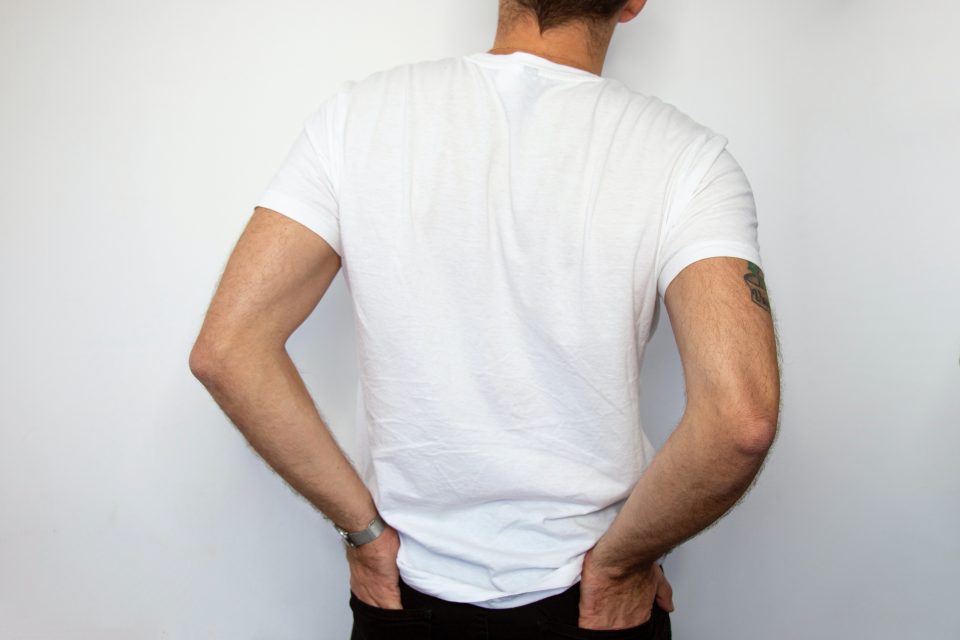There are typically two schools of thought when it comes to t-shirts and fashion.
There are some men, the vast majority of them, who view tees as a wardrobe essential that can be paired with little to no thought and is suitable for almost any occasion.
Then there are the vocal but few traditionalists who believe t-shirts are completely childish and unprofessional-looking and should never be worn outside of a gym or near the beach.
The ins and outs of this fashionable, sensible approach to the tee will be discussed today, along with how, when, and where to wear one.
Table of Contents
The Origins of T-Shirts
T-shirts have a very modern feel, but their history as undershirts dates back more than a century.
Because of their boxy body and attached sleeves, t-shirts get their name for their T-shaped shape. These T-shaped clothing pieces have a long history; originally made of wool or silk, they frequently covered the entire body, were made to absorb perspiration, and served as a barrier between a man’s skin and the more expensive clothing he wanted to keep clean.
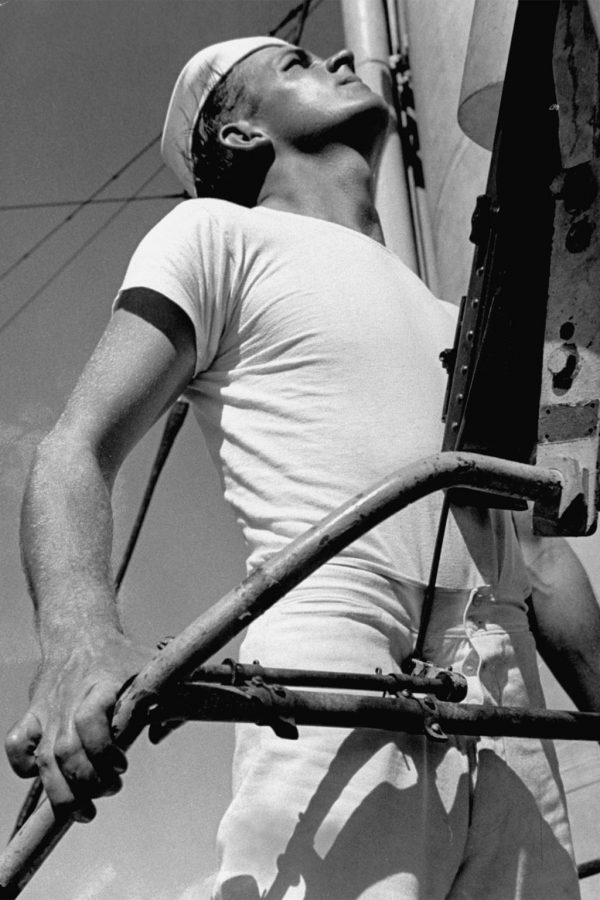
Improvements in cotton fabric production and weaving during the Industrial Revolution led to the creation of undergarments that were more breathable and fitted than their frequently baggy and rough predecessors (though they were far from as soft and cool as tees are today). In the 19th century, “T-shirts” were typically the tops of the two-piece union suits that men wore underneath their clothing. Miners and dockworkers began donning these tops with just their pants while they worked.
Improvements in cotton fabric production and weaving during the Industrial Revolution led to the creation of undergarments that were more breathable and fitted than their frequently baggy and rough predecessors (though they were far from as soft and cool as tees are today). In the 19th century, “T-shirts” were typically the tops of the two-piece union suits that men wore underneath their clothing. Miners and dockworkers began donning these tops with just their pants while they worked.
The US Navy started providing undershirts to its sailors around the turn of the 20th century, and other military branches would soon follow suit. These undershirts were intended to be worn beneath a uniform, but soldiers, sailors, and marines, particularly those engaged in combat in hot environments, frequently removed their uniform top to work exclusively in t-shirts and pants.
There were also items made specifically to be worn as undershirts that were accessible to the general public. They were adopted by farmers, ranchers, and laborers of all kinds as well as athletes and sports enthusiasts because they were cozy, affordable, and simple to clean. Tees as outerwear also started to gain popularity in the 1940s as play clothes for young boys, who were notorious for getting dirty and didn’t have to adhere to the same strict dress codes as older men.
Veterans continued to work around the house in their undershirts and trousers after World War II. The undershirt became a common outer layer in the 1950s thanks to movies like The Wild Ones, A Streetcar Named Desire, and Rebel Without a Cause. The t-shirt was given an air of edgy rebelliousness by Marlon Brando and James Dean, who transformed it into a symbol of masculine cool. And as is so often the case, what had previously been worn by the working class was quickly adopted as their own by the middle class.
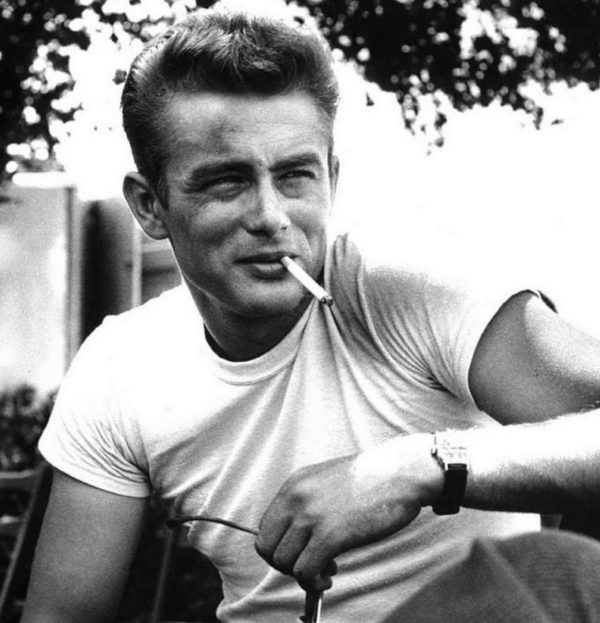
In the 1960s, improvements in screen printing gave rise to a fresh generation of graphic t-shirts that featured everything from band names to political slogans. T-shirts were one of the major factors in the democratization of American fashion; whereas the cut, tailoring, and fabric of one’s clothes had previously served as class and identity markers, the new mediums for individual expression were uniform, affordable t-shirts.
A piece of clothing that you wouldn’t have seen on a single person walking down the street 75 years ago ended up becoming the de facto national uniform of the United States.
T-Shirts: When to wear one
It is not surprising that a piece of clothing that was once underwear and a staple for young boys has kept some of its childlike qualities and reputation as the most casual of casual attire. It is for this reason that fashion purists support tees having a minimal role in a man’s wardrobe and like to point out that wearing one by itself will make you look unprofessional and underdressed in many other countries.
T-shirts, however, also have a tough, iconoclastic past and continue to offer the same levels of convenience, comfort, and usefulness that first made them so well-liked. Even though they may never be worn for weddings or funerals, they can be stylish and appropriate for occasions other than the gym or the beach when worn properly.
The trick is simply knowing when wearing a t-shirt is appropriate and wise, which can be determined by carefully considering the following factors:
Dress Code. T-shirts are inappropriate in formal settings, including “Casual Fridays” at work (unless you work in a very casual office). An event-like setting is not the appropriate setting for a t-shirt. They work best for casual, loosely planned activities and gatherings.
How active are you going to be? Tees were designed for work, sports, and general productivity. Wearing a t-shirt will be more appropriate the more you’ll be moving and perspiring.
What age are you? T-shirts are more appropriate for young men than for people who have graduated from college.
Body Shape. Almost all clothing looks better on a fit body, but t-shirts in particular. If you’re thin or overweight, the t-shirt will either hang lifelessly over your lean frame or cling to and highlight your stomach. Similarly, the contrast between the sleeve and your skin will highlight either your bony or pudgy arms. Therefore, dress shirts and sports jackets, which add structure to the body, build out the shoulders, take in the waist, and create a more masculine v-shape, always look better on thin and overweight men. Even casual tops like polos and short-sleeved henleys are more attractive on larger men because they have details at the neckline that draw attention to the face rather than the stomach. Even for men who are fit and can more easily get away with wearing tees, these options are just as simple and comfortable as t-shirts and are almost always a better option.
Do you desire a favorable first impression? T-shirts are not the most attractive clothing option, no matter what your body type. Therefore, it’s better to wear something a little sharper whenever you’re out and about doing something where you might want to make a good first impression. T-shirts are therefore great for lounging around the house, gatherings with old friends, and running errands (especially if you’re married; a bachelor never knows if he’ll meet a special lady at the grocery store!). However, they are less suitable for events where you’ll be meeting lots of new people, such as parties.
How to Pick a T-Shirt
Fit
The foundation of good fashion is fit. Even though we frequently associate this dimension with items like suits and dress shirts, it’s crucial to ensure that your t-shirts fit properly as well.
Size/Tightness. T-shirts shouldn’t be too tight or too baggy. If it’s too big, it will look unflattering and sag like a pillowcase. Too tight will make you look like a stuffed sausage, which can be interpreted as being narcissistic, flamboyant, or douchey. You can lean toward tighter over looser if you’re in good physical condition and have a good build. Lean toward a looser fit if you’re overweight, but don’t go overboard; too much extra fabric will only make you appear larger rather than smaller.
Seamed shoulders. Instead of being lower on your arm or closer to your neck, the seams where the sleeves attach to the body should, in ideal circumstances, precisely line up with where your shoulder terminates.
Sleeves. The sleeves of a tee should come halfway up your upper arm. If you’re very tall, sleeves that extend a little further down can look proportionate.
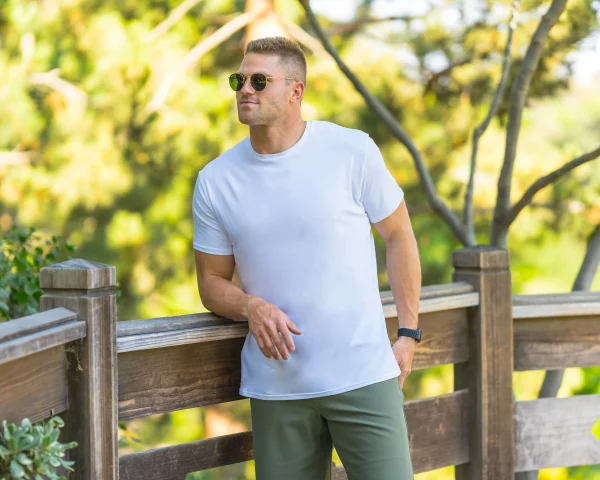
Length. No higher than your hips, your waistband should be covered by the bottom hem of the tee, and ideally, it should fall a few inches below it. Any shorter and you risk exposing your back, butt crack, or belly when you bend over as you enter midriff territory. If it’s any longer, the shirt starts to resemble a nightgown.
Shape. Avoid boxy t-shirts with sleeves that wear like a sandwich board. The tee should be cut to somewhat resemble your body shape.
Neckline/ Collar
The crew and v-neck are the two most common necklines for t-shirts. Each works best depending on the style you’re going for as well as your face and body proportions.
The crew neck. This is the most traditional choice and offers a timeless appearance. It looks best on men with slim builds and frames because the collar draws the eye outward, elongating the neckline and giving the impression of squarer shoulders. For men with longer necks and narrower faces, the crew collar is a good option because it balances and adds proportion to these features.

The v-neck. A v-neck gives the classic tee a little more visual interest and style while feeling a little less formal than a crew collar. It works well for shorter men because it adds a little bit of height and helps one look less boxy. It also flatters men with wider or rounder faces. However, because a v-neck tends to draw attention to the belly, I wouldn’t suggest it for people who are larger in stature.
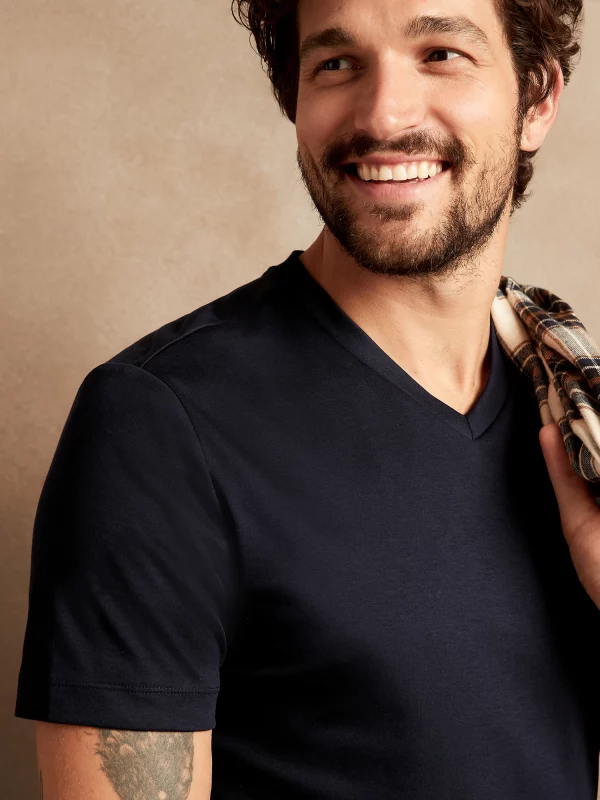
Material
In general, going with 100% cotton t-shirts is the best option. Cotton feels wonderful and looks great. It is natural, soft, cool, and static-resistant. A decent alternative is a 50/50 blend of polyester; while the synthetic material makes the shirt less moisture-absorbent and more prone to wrinkling and shrinking, it is also less breathable, pills more easily from wear, and increases static. Although t-shirts made entirely of special synthetic fabrics may better wick away perspiration, they are only suitable for workout wear, and they are significantly less comfortable than pure cotton unless you’re working up a serious sweat.
The quality of a t-shirt’s fabric isn’t always correlated with its thickness; pima and Egyptian cotton, for instance, are made with longer fibers and are lighter than regular cotton, as well as softer and more durable. However, thicker tees generally appear more substantial and put together. Thinner, gauzier tees can cling to your belly or love handles in an unflattering way and tend to look cheaper and sloppier.
Neutral-colored, thinner tees also have a tendency to resemble undershirts rather than t-shirts. The main distinction between the two garments is the weight of the fabric; undershirts are lighter and also fit more snugly to absorb perspiration.
Pattern
There are two main subcategories of t-shirts: classic and graphic.
Classic T-Shirts
Traditional solid colors make for the most timeless-looking tees:
- White: is the grandfather of them all, having originated in the undershirts worn by sailors and soldiers. It still brings to mind the “rebels without a cause” who transformed the item into outerwear during the post-war era when worn with jeans.
- Navy is almost always well-groomed.
- Gray is a flattering color, but it readily reveals underarm perspiration.
- Although you might be going for that look, black is the hardest color to pull off because it appears a little starker and harder.
Depending on your skin tone, other colors, such as reds, greens, and purples, may also look good on you.
Graphic T-Shirts
Because graphic tees are more recent than their solid-colored counterparts, they have a more contemporary and youthful vibe. They also dress more casually. Additionally, the graphic becomes more informal as it becomes bolder and larger. Therefore, all graphic tees are best saved for activities like going to the gym, running errands, and casual gatherings. When watching a game at home with friends or at the stadium, t-shirts from your alma mater or your favorite sports team work well, but not when attending dinner parties.
Avoid giant, screaming logos, metallics, funny gags, and ironic images, which read as lowbrow and rather childish, and opt for graphic tees with intriguing and tasteful designs.
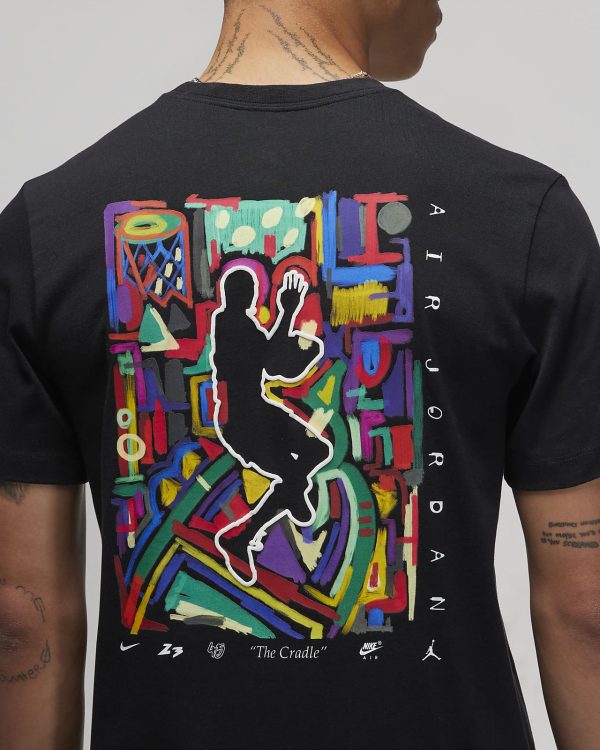
Tips on How to Style a T-Shirt
- Dark khakis or denim go well with solid-colored white or gray t-shirts. A very timeless appearance that is difficult to misunderstand. With khakis, crewnecks look particularly stylish.
- Wear khakis with tees in those colors. In general, lighter pants and a darker shirt look better than blue on blue.
- If a graphic tee’s dominant color is dark, wear it with a lighter bottom. Also the opposite.
- Layer carefully. The sport jacket/blazer + t-shirt look may be popular among some contemporary dudes, but many fashion experts don’t particularly like it. The relative formality of the jacket jars with the casualness of the tee. If you’re going to wear a t-shirt underneath a sport coat, you should choose a jacket that is especially casual. Consider natural fabrics, soft draping, and texture. Even then, switching the tee out for a casual button-down will look better. On the other hand, a t-shirt can look great worn under a cardigan sweater, blouson, or leather jacket (as Dean did above).
- Tees should not be tucked in. It will almost always come across as nerdy.
Conclusion
Most men’s casual wardrobes now consist primarily of T-shirts as a go-to basic. But that doesn’t mean you should just grab them and wear them. Fit, color, and style considerations can transform the plain tee into a versatile, timeless article of clothing that feels great and appears sharp.
